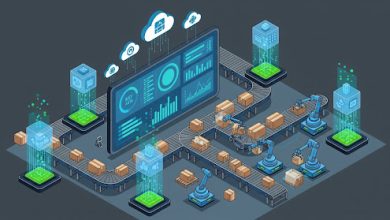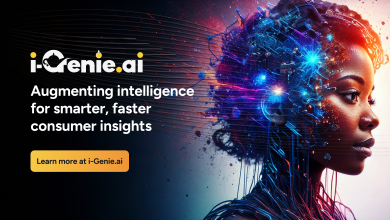Enterprises manage large volumes of data across multiple platforms and systems. Moving that data is complex and requires precision. The data migration checklist provides structure and reduces errors, but AI improves every step of the process by adding automation, analysis, and monitoring.
This has been the purpose of the data migration checklist, which is now enhanced with the power of artificial intelligence to make it more accurate, faster, and flexible. AI simplifies the discovery process, minimizes manual work, and allows real-time tracking. It also provides the insights that inform the planning and validation, and the migration process becomes more efficient and manageable.
Assess and Analyze Existing Data
Migration starts with a clear view of the present data. AI can classify and scan large volumes at high speed to reduce manual effort. Key functions include:
- AI detects duplicates and inconsistencies
- Models flag anomalies that may cause errors
- Mapping suggests how the source data aligns with targets
Specify Migration Goals and Strategy
A successful migration is not possible without clear goals and a proper structure of strategy. Projects may fail to be on schedule, have data problems, or incur otherwise unanticipated expenses without proper forecasting. Research released by Oracle indicates that more than 80% of data migration projects end up either being time- or budget-overrun, hence the necessity of forecasting. Key applications include:
- Anticipating Workload Complexity: AI models can be used to predict the time and resources that will be necessary to migrate the current workloads.
- Optimized Roadmaps: Behind-the-scenes AI-driven tools optimize various strategies of migration, such as a staged transfer or a complete relocation of a system.
- Risk Forecasting: AI analyzes data structures and processes in order to identify those areas that are more prone to failure.
Testing and Validation with AI
Once migrated, data should be checked to provide accuracy and consistency. AI is used to minimize the number of manual checks by means of automated validation techniques that make the procedure much quicker and more trustworthy.
Core functions include:
- AI generates test cases that reflect actual data patterns
- Algorithms compare records across systems to verify accuracy
- Post-migration monitoring is meant to identify discrepancies or drift.
Provide Compliance and Security
Data transfers must align with strict rules while sensitive information remains protected. AI adds oversight by analyzing migration activities in real time, which helps teams respond quickly to potential risks. Key areas where AI supports compliance and security include:
- Detection systems identify personal or financial records
- Audit trail automation records migration activity for easier reviews
- Access monitoring alerts teams if unusual behavior occurs during transfer
Post-Migration Optimization
AI continues to provide value long after the migration process ends. When the data has been relocated to its new environment, the priority will be on ensuring that the system is functioning effectively, to assist the business goals, and to maintain data quality. Companies that offer AI and data services showcase the use of artificial intelligence in business to monitor, adjust, and improve performance, all without manual control.
Performance Analytics
After migration, teams need visibility into how the new environment behaves under real workloads. AI-driven analytics provide detailed reports on speed, response times, and system efficiency. These insights reveal what applications work well and what needs to be changed.
Flexible System Adjustment
Data and user requirements do not remain the same. AI supports adaptive scaling by monitoring system usage and recommending adjustments in real time. If workloads increase, AI can suggest allocating additional resources to maintain performance. In case of a decrease in usage, it can assist in scaling down the budget.
Ongoing Data Quality Monitoring
Data quality remains a priority even after migration is complete. AI will monitor consistency, accuracy, and relevance in the new environment continuously. It is able to identify problems like unfinished records, duplicate entries, or old information.
Data Cleansing and Preparation
Information should be correct and uniform, and then it can be transferred into a new system. AI facilitates this step by automating tedious activities that occasionally slow down projects. Algorithms can detect and remove near-duplicate entries that create clutter and confusion. Formatting tools adjust dates, codes, and text fields into a standard structure, ensuring compatibility between old and new systems. AI also flags sensitive information so that compliance rules are followed throughout the migration process.
Execute Migration with Intelligence
The execution phase requires flexibility and constant oversight, and AI provides both. Smart orchestration tools balance workloads across systems and assign resources where demand is highest, which reduces strain and improves efficiency. To limit disruption, AI also uses usage forecasts to identify low-traffic periods, which gives teams a better window for transfer. Together, these capabilities support smoother migration and reduce the impact on daily operations.
Services That Support Migration and Post-Migration Needs
Specialized services cover every stage of migration, from application maintenance and automated testing to integration and cloud strategy. Teams ensure systems remain stable, detect issues early, and connect platforms through APIs and modern development practices. Support continues after migration with monitoring, updates, and optimization, which helps organizations manage data more effectively and adapt systems to future demands.
The Bottom Line
The data migration checklist becomes more effective with AI at each stage. In assessment, planning, cleansing, execution, validation, compliance, and post-migration processes, automation and smart insights may come in handy. To reduce the number of individuals working manually, attract attention to the potential threat, and facilitate ongoing monitoring, artificial intelligence is applied.
Companies such as Quinnox assist organizations in analyzing data about workforce skills and capabilities. They create training programs according to the needs of individual employees so that learning can be relevant and practical. Their advice also contributes to the businesses implementing AI tools in a manner that seems natural to the employees.





